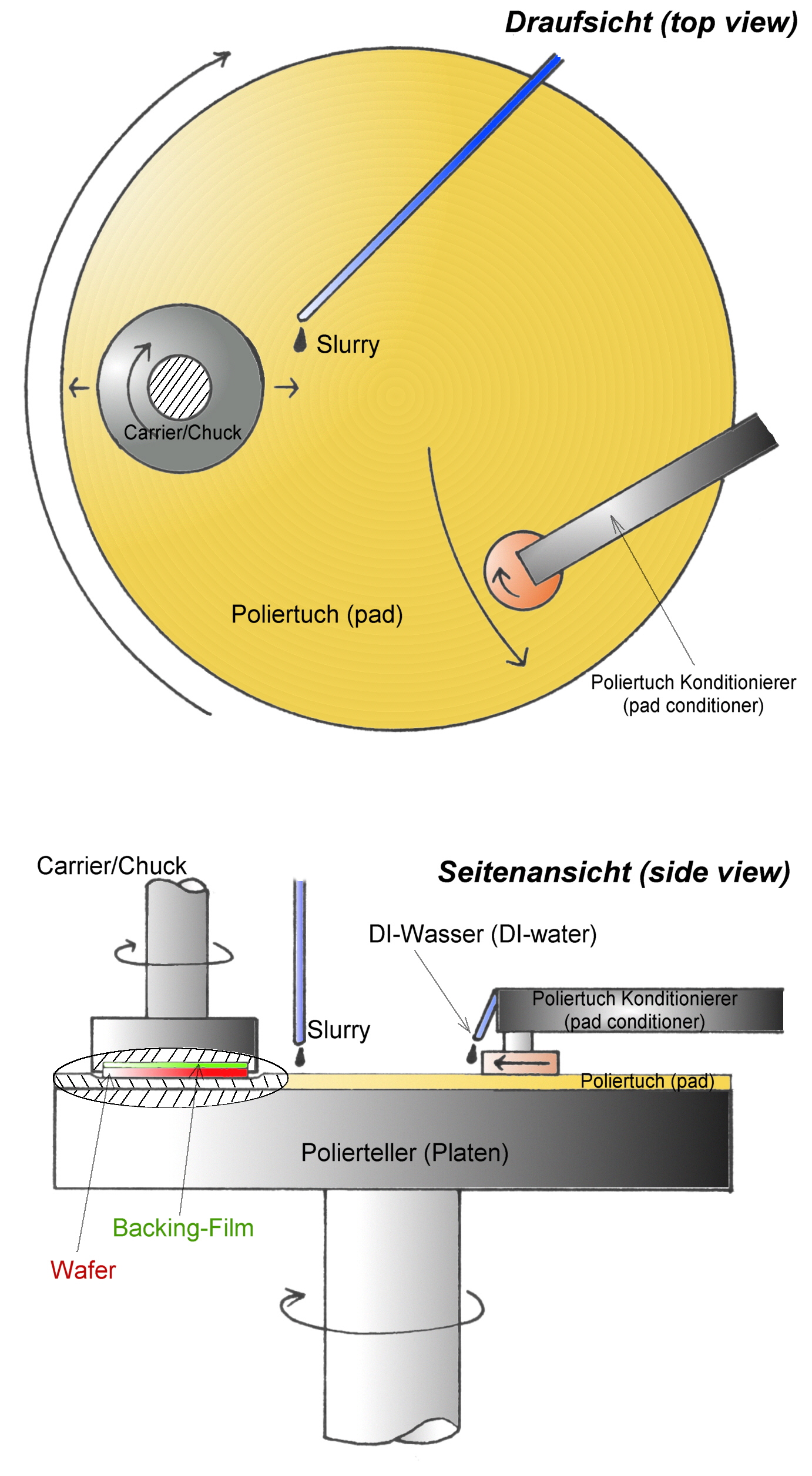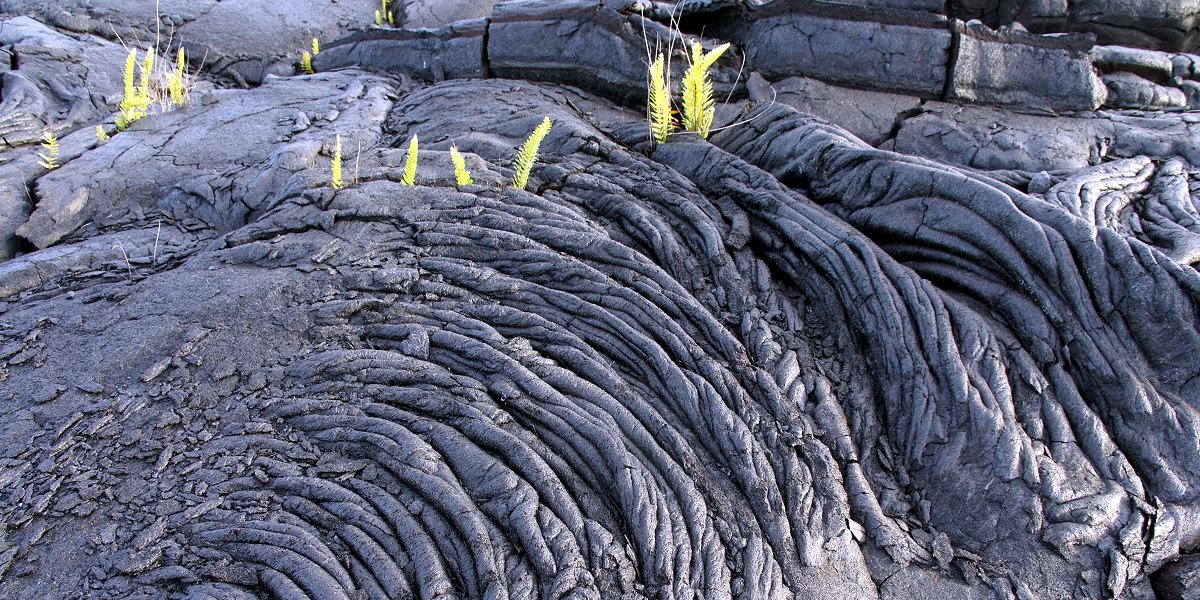|
Comminution
Comminution is the reduction of solid materials from one average particle size to a smaller average particle size, by crushing, grinding, cutting, vibrating, or other processes. Comminution is related to pulverization and grinding. All use mechanical devices, and many types of mills have been invented. Concomitant with size reduction, comminution increases the surface area of the solid. For example, a pulverizer mill is used to pulverize coal for combustion in the steam-generating furnaces of coal power plants. A cement mill produces finely ground ingredients for portland cement. A hammer mill is used on farms for grinding grain and chaff for animal feed. A demolition pulverizer is an attachment for an excavator to break up large pieces of concrete. Comminution is important in mineral processing, where rocks are broken into small particles to help liberate the ore from gangue. Comminution or grinding is also important in ceramics, electronics, and battery research. Mech ... [...More Info...] [...Related Items...] OR: [Wikipedia] [Google] [Baidu] |
Mineral Processing
Mineral processing is the process of separating commercially valuable minerals from their ores in the field of extractive metallurgy. Depending on the processes used in each instance, it is often referred to as ore dressing or ore milling. Beneficiation is any process that improves (benefits) the economic value of the ore by removing the gangue minerals, which results in a higher grade product (ore concentrate) and a waste stream (tailings). There are many different types of beneficiation, with each step furthering the concentration of the original ore. Key is the concept of recovery (mineral processing), recovery, the mass (or equivalently molar) fraction of the valuable mineral (or metal) extracted from the ore and carried across to the concentrate. History Before the advent of heavy machinery, raw ore was broken up using hammers wielded by hand, a process called "''spalling''". Eventually, mechanical means were found to achieve this. For instance, stamp mills were being ... [...More Info...] [...Related Items...] OR: [Wikipedia] [Google] [Baidu] |
Mill (grinding)
A mill is a device, often a structure, machine or kitchen appliance, that breaks solid materials into smaller pieces by grinding, crushing, or cutting. Such comminution is an important unit operation in many processes. There are many different types of mills and many types of materials processed in them. Historically, mills were powered by hand or by animals (e.g., via a hand crank), working animal (e.g., horse mill), wind ( windmill) or water (watermill). In the modern era, they are usually powered by electricity. The grinding of solid materials occurs through mechanical forces that break up the structure by overcoming the interior bonding forces. After the grinding the state of the solid is changed: the grain size, the grain size disposition and the grain shape. Milling also refers to the process of breaking down, separating, sizing, or classifying aggregate material (e.g. mining ore). For instance rock crushing or grinding to produce uniform aggregate size for construc ... [...More Info...] [...Related Items...] OR: [Wikipedia] [Google] [Baidu] |
Geology
Geology (). is a branch of natural science concerned with the Earth and other astronomical objects, the rocks of which they are composed, and the processes by which they change over time. Modern geology significantly overlaps all other Earth sciences, including hydrology. It is integrated with Earth system science and planetary science. Geology describes the structure of the Earth on and beneath its surface and the processes that have shaped that structure. Geologists study the mineralogical composition of rocks in order to get insight into their history of formation. Geology determines the relative ages of rocks found at a given location; geochemistry (a branch of geology) determines their absolute ages. By combining various petrological, crystallographic, and paleontological tools, geologists are able to chronicle the geological history of the Earth as a whole. One aspect is to demonstrate the age of the Earth. Geology provides evidence for plate tectonics, the ev ... [...More Info...] [...Related Items...] OR: [Wikipedia] [Google] [Baidu] |
Wood
Wood is a structural tissue/material found as xylem in the stems and roots of trees and other woody plants. It is an organic materiala natural composite of cellulosic fibers that are strong in tension and embedded in a matrix of lignin that resists compression. Wood is sometimes defined as only the secondary xylem in the stems of trees, or more broadly to include the same type of tissue elsewhere, such as in the roots of trees or shrubs. In a living tree, it performs a mechanical-support function, enabling woody plants to grow large or to stand up by themselves. It also conveys water and nutrients among the leaves, other growing tissues, and the roots. Wood may also refer to other plant materials with comparable properties, and to material engineered from wood, woodchips, or fibers. Wood has been used for thousands of years for fuel, as a construction material, for making tools and weapons, furniture and paper. More recently it emerged as a feedstock for the production ... [...More Info...] [...Related Items...] OR: [Wikipedia] [Google] [Baidu] |
Mastication
Chewing or mastication is the process by which food is comminution, crushed and ground by the teeth. It is the first step in the process of digestion, allowing a greater surface area for digestive enzymes to break down the foods. During the mastication process, the food is positioned by the cheek and tongue between the teeth for grinding. The muscles of mastication move the jaws to bring the teeth into intermittent contact, repeatedly occlusion (dentistry), occluding and opening. As chewing continues, the food is made softer and warmer, and the enzymes in saliva begin to break down carbohydrates in the food. After chewing, the food (now called a Bolus (digestion), bolus) is swallowed. It enters the esophagus and via peristalsis continues on to the stomach, where the next step of digestion occurs. Increasing the number of chews per bite stimulates the production of digestive enzymes and peptides and has been shown to increase diet-induced thermogenesis (DIT) by activating the sympa ... [...More Info...] [...Related Items...] OR: [Wikipedia] [Google] [Baidu] |
Chemical Engineering
Chemical engineering is an engineering field which deals with the study of the operation and design of chemical plants as well as methods of improving production. Chemical engineers develop economical commercial processes to convert raw materials into useful products. Chemical engineering uses principles of chemistry, physics, mathematics, biology, and economics to efficiently use, produce, design, transport and transform energy and materials. The work of chemical engineers can range from the utilization of nanotechnology and nanomaterials in the laboratory to large-scale industrial processes that convert chemicals, raw materials, living cells, microorganisms, and energy into useful forms and products. Chemical engineers are involved in many aspects of plant design and operation, including safety and hazard assessments, process engineering, process design and analysis, modeling and simulation, modeling, control engineering, chemical reaction engineering, nuclear engineering, biologi ... [...More Info...] [...Related Items...] OR: [Wikipedia] [Google] [Baidu] |
Unit Operation
In chemical engineering and related fields, a unit operation is a basic step in a process. Unit operations involve a physical change or chemical transformation such as separation, crystallization, evaporation, filtration, polymerization, isomerization, and other reactions. For example, in milk processing, the following unit operations are involved: homogenization, pasteurization, and packaging. These unit operations are connected to create the overall process. A process may require many unit operations to obtain the desired product from the starting materials, or feedstocks. History Historically, the different chemical industries were regarded as different industrial processes and with different principles. Arthur Dehon Little developed the concept of "unit operations" to explain industrial chemistry processes in 1916. In 1923, William H. Walker, Warren K. Lewis and William H. McAdams wrote the book ''The Principles of Chemical Engineering'' and explained that the variety of c ... [...More Info...] [...Related Items...] OR: [Wikipedia] [Google] [Baidu] |
Geevor Waterwheel Stamps
Geevor Tin Mine (from , meaning "mine of the goats"), formerly North Levant Mine is a tin Mining, mine in the far west of Cornwall, England, between the villages of Pendeen and Trewellard. It was operational between 1911 and 1990 during which time it produced about 50,000 tons of black tin. It is now a museum and heritage centre left as a living history of a working tin mine. The museum is an Anchor Point of ERIH, The European Route of Industrial Heritage. Since 2006, the mine has been part of the UNESCO World Heritage Site Cornwall and West Devon Mining Landscape. History Tin and copper have been mined from the general area of Geevor since the late 18th century. It was originally a small enterprise known as ''Wheal an Giver'', "a piece of ground occupied by goats". The area was worked under the name of East Levant Mine until 1840 and then as North Levant from 1851 to 1891 when it closed.Stanier, 1998 p.53 During the 1880s as many as 176 workers were employed at the mine, but ... [...More Info...] [...Related Items...] OR: [Wikipedia] [Google] [Baidu] |
Fault (geology)
In geology, a fault is a Fracture (geology), planar fracture or discontinuity in a volume of Rock (geology), rock across which there has been significant displacement as a result of rock-mass movements. Large faults within Earth's crust (geology), crust result from the action of Plate tectonics, plate tectonic forces, with the largest forming the boundaries between the plates, such as the megathrust faults of subduction, subduction zones or transform faults. Energy release associated with rapid movement on active faults is the cause of most earthquakes. Faults may also displace slowly, by aseismic creep. A ''fault plane'' is the Plane (geometry), plane that represents the fracture surface of a fault. A ''fault trace'' or ''fault line'' is a place where the fault can be seen or mapped on the surface. A fault trace is also the line commonly plotted on geological maps to represent a fault. A ''fault zone'' is a cluster of parallel faults. However, the term is also used for the zone ... [...More Info...] [...Related Items...] OR: [Wikipedia] [Google] [Baidu] |
Mechanical Pulping
Mechanical pulping is the process in which wood is separated or defibrated mechanically into pulp for the paper industry. Mechanical pulping processes use wood in the form of logs or chips that are mechanically processes, by grinding stones (from logs) or in refiners (from chips), to separate the fibers. Industrial mechanical pulping started in the 1840s with groundwood pulping, producing the pulp from grinding. This made wood fibers the main raw material in paper, instead of textile fibers. Later the chemical pulping processes started dominating for many paper types. Today the groundwood pulping mills are few, but the mechanical pulping processes employing refiners are still important in the Pulp and paper industry. The mechanical pulps are primarily used in newspaper and magazine paper and the chemimechanical pulps for cardboard and soft paper. Mechanical pulps in the paper industry Mechanical pulp is very different from the pulp produced in the chemical processes (the sulfite ... [...More Info...] [...Related Items...] OR: [Wikipedia] [Google] [Baidu] |
Crust (geology)
In geology, the crust is the outermost solid shell of a planet, dwarf planet, or natural satellite. It is usually distinguished from the underlying mantle by its chemical makeup; however, in the case of icy satellites, it may be defined based on its phase (solid crust vs. liquid mantle). The crusts of Earth, Mercury, Venus, Mars, Io, the Moon and other planetary bodies formed via igneous processes and were later modified by erosion, impact cratering, volcanism, and sedimentation. Most terrestrial planets have fairly uniform crusts. Earth, however, has two distinct types: continental crust and oceanic crust. These two types have different chemical compositions and physical properties and were formed by different geological processes. Types of crust Planetary geologists divide crust into three categories based on how and when it formed. Primary crust / primordial crust This is a planet's "original" crust. It forms from solidification of a magma ocean. Toward the end o ... [...More Info...] [...Related Items...] OR: [Wikipedia] [Google] [Baidu] |






